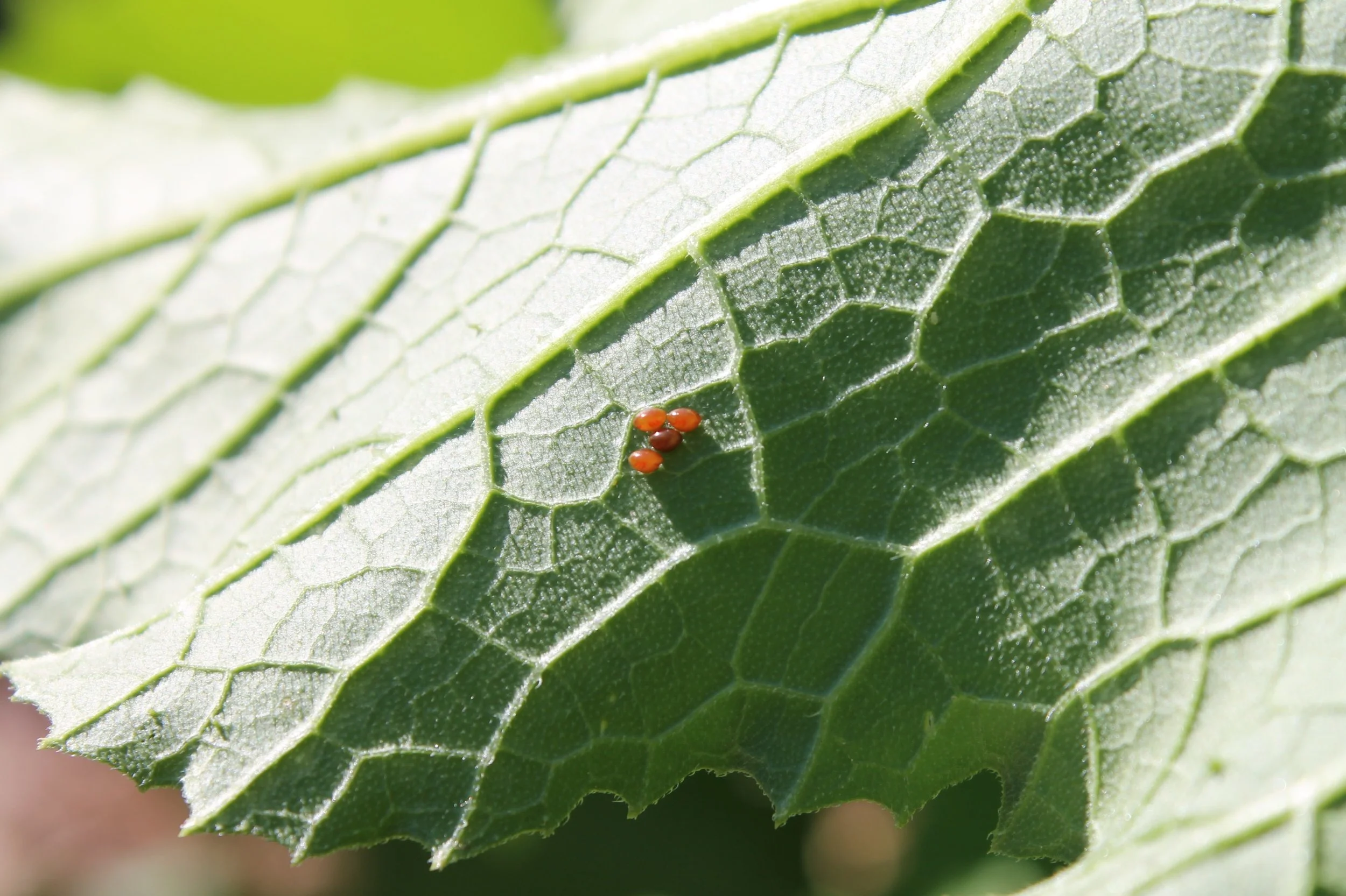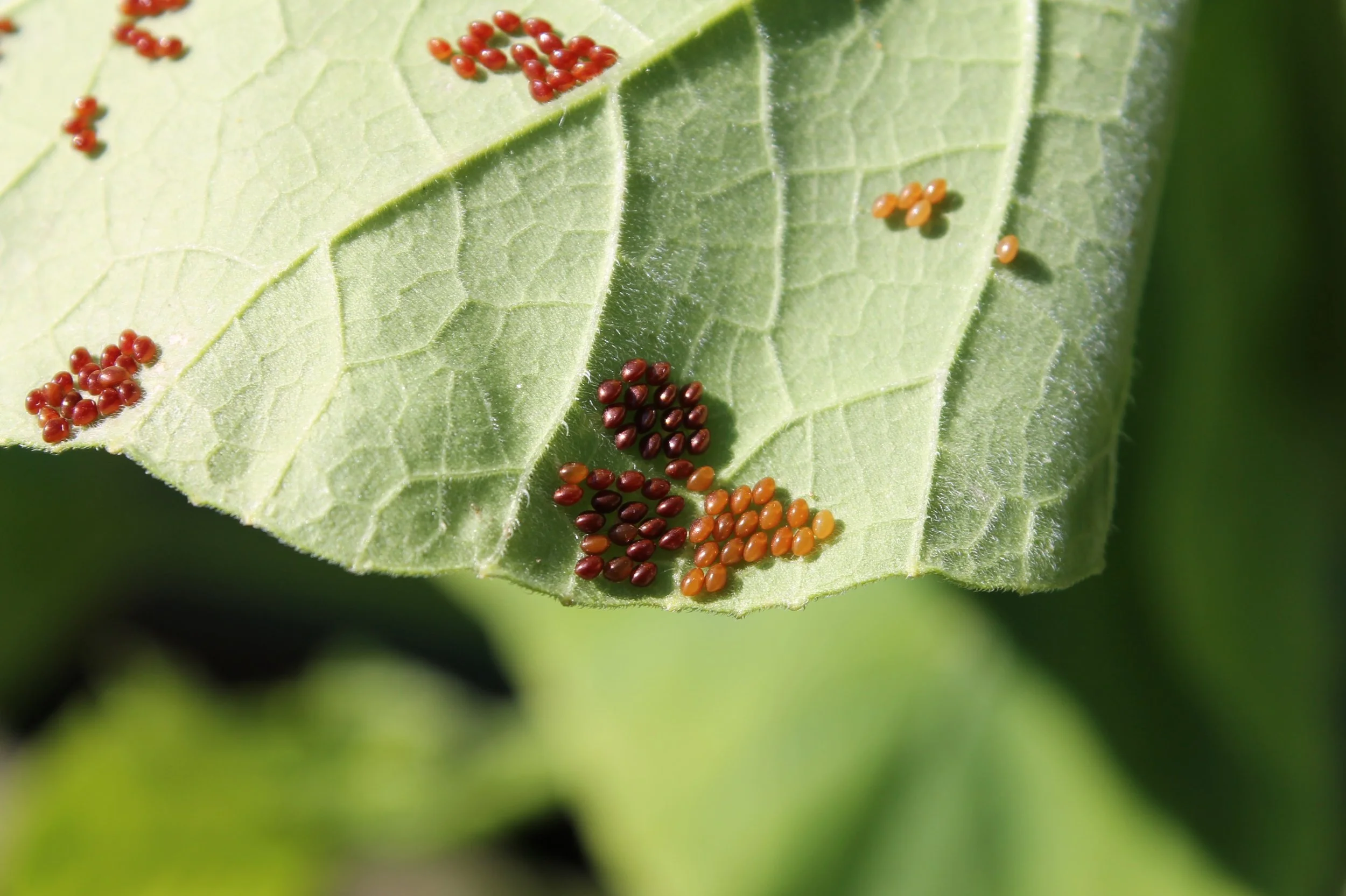This year's July 4th weekend was lovely and long. We had family and guests all weekend, and while we spent a great deal of time in the garden, there was far more relaxing (and drinking, to be honest) than actual gardening going on. So I caught up with things this morning and found both delights and horrors that I had missed over the past 5 days.
The first thing I noticed was that the flowers had gotten into the spirit of the holiday. Between Monarda, echinacea, tiger lilies, and hydrangea, the garden was festooned in red, white and blue.
The second discovery was that although the warm weather had slowed things down in the vegetable garden, we've gone from 0 to 60 in no time and are suddenly reaping daily bountiful harvests. Yesterday's haul was a medley of beets, zucchini, peas (shell and snap) and a bonanza of zucchini blossoms which I dipped in a light flour and club soda batter (secret ingredient: Old Bay seasoning added to the flour) and fried for that night's appetizer.
And the beans are up! We grow several varieties, but the one we like best is a flat Italian bean called Garden of Eden, which takes blanching and freezing very well. We've grown that as long as Mr. Mulch has had a garden -- some 30 years or so, and we freeze enough so we can eat our own veggies all winter long. For some reason this year, none of the usual sources had the seed and we were near panic stage. I don't know whether there was a crop failure or some other disaster, but it was nowhere to be found -- in the US. We finally found a Canadian supplier who had it, but they couldn't ship seed to the US. Thanks to a dear friend and Canadian expat who is now a dedicated New Yorker, we were able to violate a multitude of international trade laws and have the seed sent to her brother's office and from there forwarded to us in a nondescript brown envelope. Since no federal agents have yet shown up, I think this year's crop will be safe.
And here they are, just beginning their transformation. And though this looks almost like a time-lapse series, these are four different beans. At this early stage they all emerge at a staggered pace, and the bed is a study in both bean biology and physiology.
Of horrors, there were two. Well, one more amusing than ghastly, the other ghastly indeed. We'll take them in that order.
In our front garden, we have an Ilex Crenata, or "Sky Pencil;" a Japanese Holly often used as a vertical accent plant. As it's name would suggest, it is a tall, thin, upright plant whose branches grow almost vertical so while it can get tall, it's very compact, taking up little horizontal room. We planted ours about 5-6 years ago when it was about 3' tall, and it quickly shot up, til this year it passed the 6' mark. Virtually every article I've read states that, "Once established, Sky Pencil hollies need very little care." So that's exactly what I've given it.
So... it turns out that "very little" isn't actually the same thing as "none at all." As a result, this year our Ilex is hardly pencil-like. The long upright branches started falling away from the central stem, and for a while it looked as though it were giving the finger to our neighbors. I tried corralling the wayward stems with fishing line, which worked until the heavy rains of mid-June snapped some of the lines, and left the entire plant sagging hard to starboard. I cut the rest of the line, hoping that it would spring upright to enjoy its freedom.
Instead, it now looks as though it had studied dance with Isadora Duncan, and is posing for its headshot. It did, however inspire my daughter and I to take some lessons, and the photo below captures all three of us (that includes the Ilex) in a Duncan-inspired interpretive dance. Complete with with wine glasses -- just for my daughter and me.
Interpretive dance with Ilex (and wine).
Now for the true disaster. Squash beetles. Not just a couple, but potentially gazillions. It's almost impossible to avoid beetle damage with zucchini, so we plant them in succession and try to stay one step ahead of these incredibly destructive insects. Usually by the time the beetles have destroyed one plant, the next one is producing, and when the beetles get that one, the next is ready, and so on. I did see and dispatch a couple of fully grown ones on our oldest plant and thought that we were in relatively good shape. Until I saw what appeared to be tiny little brass ball bearings on a fresh-picked zucchini. But of course, they were nothing of the kind. They were the eggs that the late adults had deposited. And they were everywhere. And I mean every. where. On every plant, even the youngest one. And apparently they like any squash; they were also all over the winter squash plants!
I've never seen an infestation like this! The photos don't adequately communicate the size of this invading army. Imagine every one of 7 plants with at least 20 leaves, each with 40 or 50 eggs! The mind boggles. I'm off to research the best way to deal with these -- hopefully while they're still in the ball bearing stage. If even half of these eggs hatch we'll have a beetle crop that will be the stuff of nightmares. So I'm not inclined to be kind. Not even a little.














